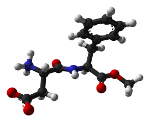A few days ago, a case involving Asda, a UK supermarket chain, drew my attention. As mentioned in the FoodNavigator, Asda and Ajinomoto, a producer of food ingredients, entered a court battle on the use of the word "nasty" for, amongst others, aspartame (actually, aspartame was indirectly referred to as one of the "hidden nasties"; Asda produces private label products claiming to contain "no nasties").
It seems that the first court ruling allowed Asda to use a generic term as "nasty" for foodstuff, thinking that it does constitute a specific "malicious falsehood". However, after Ajinomoto's appeal, a second ruling supports that the word "nasty" carries multiple meanings, one of which is damaging to aspartame products.
Although the case seems to be in progress, it is certainly interesting to think of the possible results. Asda claims to be using terms that echo consumers' concerns. So, the "no nasties" claim actually translates to the fact that the product labelled as such contains none of the ingredients consumers tend to think as "nasty". Interestingly, that approach requires little or no scientific backing. On the other hand, "nasty" carries a negative meaning, which might affect the choice of consumers that may think that the term is based on scientific evidence.
The food sector is, unfortunately, not empty of controversy cases. The case of aspartame is recorded as one of them. Having said that, aspartame is an approved sweetener (also known as E951 in Europe) and that means that there is sufficient scientific proof that it is safe to use within the limits and for the uses specified. By the way, Asda is not disputing aspartame's safety.
What worries me is that the case is, in a way, a question of whether free speech can apply in the market environment. Indeed, the consumers have preferences, which are not always based on scientific facts and, historically, have not always been right. So, is it ok to mirror those beliefs on products?
Well, in a way that has been done before. Think of the various certification signs that appear on food products. Some of them certify qualities that have little to do with the actual safety or nutritional content of the food. For instance, think of examples like the PDO labels, which indicate that a product was made in a specific geographical area or the TSG label that guarantees the "traditional character" of the product. Those labels often attract the consumer to the benefit of products that carry them. The difference with the "no nasties" label is that those signs are awarded after a certification process.
So the question translates: Could there be a certification process for the "no nasties" (or other equivalent phrases) sign? In theory, why not? The national legislations across Europe allow for claims such as "no preservatives", "no artificial colourings" ,etc. A similar trend applies to foodstuffs with natural flavouring. However, it would be safe to assume that the industry behind the ingredients concerned will react, possibly on the basis of established safety or on the basis of offering choices and health benefits to specific consumer groups.
The key here, as always in the food world, is for the consumer to be in position and understand what a claim on the packaging means. And that key principle applies - IMHO - to all claims, legally established or not. It is no coincidence that Regulation (EC) 1924/2006, regarding the nutrition and health claims on foodstuffs, requires food manufacturers to ensure that their claim is understood by the average consumer and, also, to provide additional relevant advice together with the claim.
Some say that the food labels of the future will have a lot of things to read. But then again, making usable information available to the consumer could be a way to improve the food choice mechanism and the food-associated wellbeing. Time will tell, I guess....
Subscribe to:
Posts (Atom)



